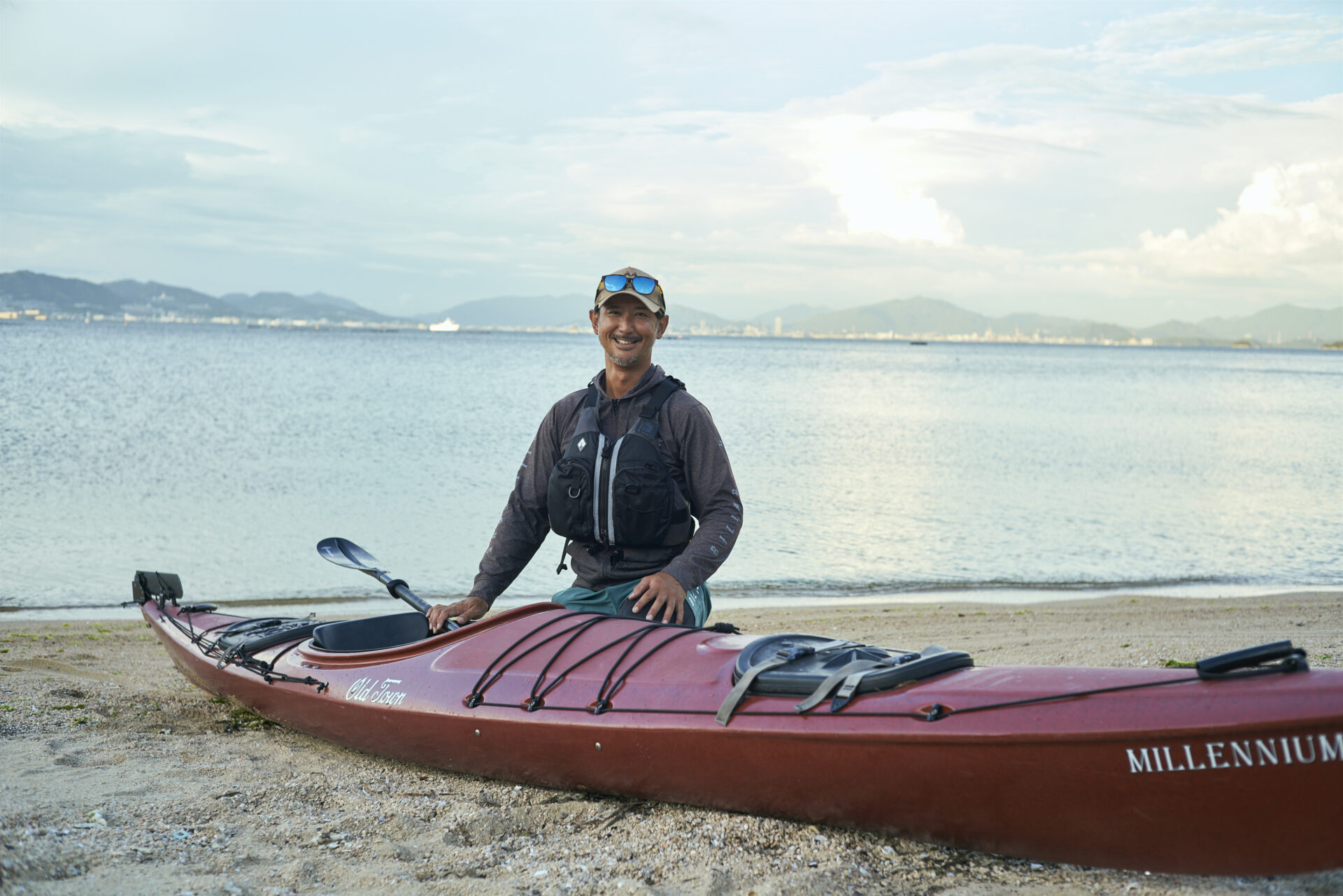
Drawn to Miyajima by the People He Met — Crafting an Adventurous Retreat Through Nature and Sea Kayaking

西村 剛志
Tsuyoshi Nishimura
Miyajima [Hiroshima]
Tsuyoshi Nishimura
Born in Kashima District, Ishikawa Prefecture. After working as an artist in Europe, he discovered his love of nature and spent ten years in New Zealand as a mountain guide. He later moved to Iriomote Island in Okinawa to master sea kayaking. Just as he was preparing to launch a marine-sports base in his hometown of Noto, the Noto Peninsula earthquake struck, destroying his facilities. In 2024 he moved with his family to Miyajima, where he now runs Miyajima Sea Kayak Nossie, offering retreat-style sea-kayak experiences that blend adventure, mindfulness, and the island’s serene natural beauty.
Before dawn, the sea surrounding Miyajima lies in perfect stillness. As the first light of sunrise paints the horizon, kayaks quietly glide offshore, their paddles slicing the glassy surface. Guiding guests through this magical moment is Tsuyoshi “Johnny” Nishimura, the man behind Miyajima Sea Kayak Nossie.
After studying art in Europe, Nishimura discovered the mountains; in New Zealand, he became a mountain guide; in Okinawa, he learned the ways of the sea. Returning to his hometown of Noto, he faced a devastating loss in the 2024 Noto Peninsula earthquake. Now, having relocated with his family to Miyajima, he shares the island’s healing beauty as a sea-kayak instructor. We asked him about his journey, the meaning of life on this new shore, and the hopes he holds for the future.
From Indoors to the Outdoors — Every Turning Point Began with a Meeting
Just before sunrise, the sea around Miyajima rests in perfect calm, its surface smooth as glass. As the sun slowly emerges, the sky shifts from violet to soft pink, then to a warm orange glow. A few kayaks glide gently offshore, the only sounds being the faint breeze and the rhythmic splash of paddles.
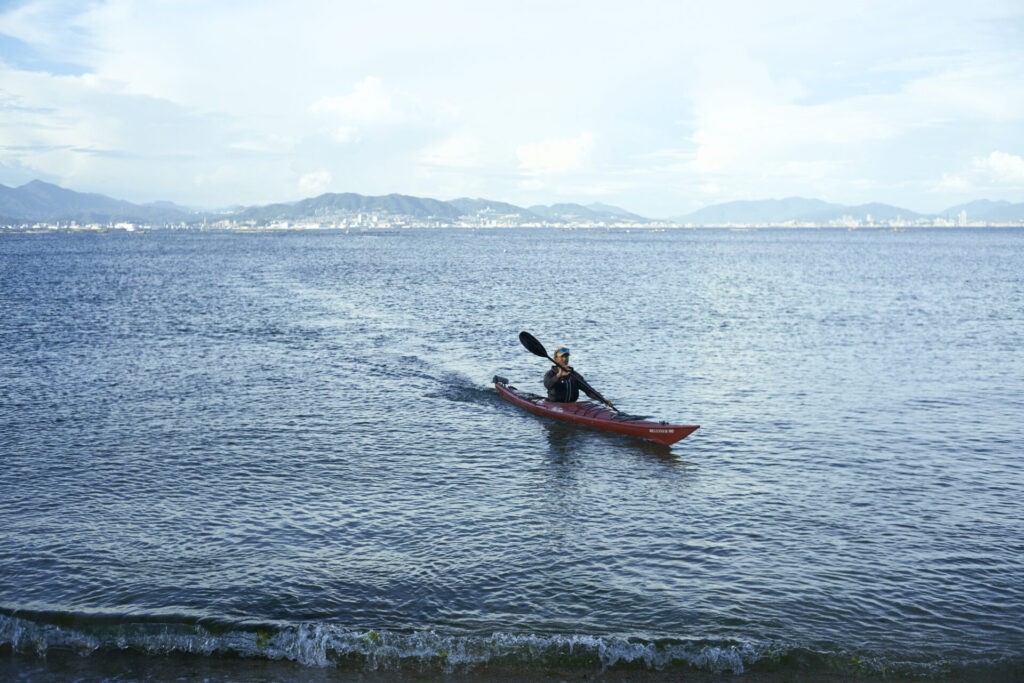
“The sense of calm at that moment is beyond words,” says Tsuyoshi Nishimura, who runs Miyajima Sea Kayak Nossie.
“When you close your eyes and meditate, it feels like your mind is being purified. As the sunlight touches you, your body resets. Sea kayaking isn’t just a sport—it’s a retreat for the soul.
”Known fondly as “Johnny,” a nickname he picked up while living in the U.K., Nishimura moved to Miyajima in 2024. Though now a true outdoorsman who thrives in nature, he admits that as a child he was far from it.
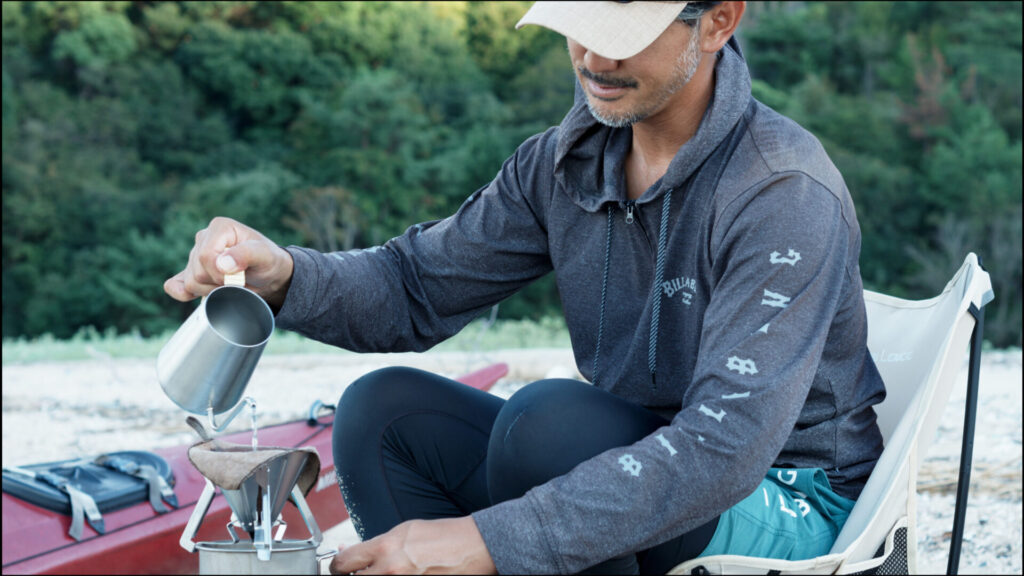
“When I was little, I hated even getting wet in the rain,” he laughs. “I had asthma and bronchitis and spent nearly a third of each year in the hospital. It wasn’t until I was almost an adult that I could finally move freely. Maybe my current lifestyle is a reaction to all those years indoors.”
A lifelong lover of art, Nishimura developed an interest in graphic design during a high school trip to the United States. After working at a design company in Japan, he decided in his mid-twenties to move to England to study fine art. There, he immersed himself in painting—studying the European masters, practicing reproductions, and traveling across the continent drawing portraits on the streets.
His life took a new turn during a stay in Austria, when he met a hiker at a lodge who invited him to join a trek. Feeling frustrated with his art at the time, Nishimura accepted.
“As we walked, the hiker explained why each plant and animal existed where it did. For the first time, I saw everything not as subjects to be drawn but as living beings. That moment changed how I viewed the world.”
Feeling freed from the frustrations of painting, he began focusing on the mountains—trekking, climbing, and exploring nature.
“Every major turning point in my life has started with someone I met,” Nishimura reflects. “That hiker completely redirected my path. Meeting him made me want to work in nature—and led me to New Zealand to become a mountain guide.”
From Mountains to the Sea — From Noto to Miyajima
Before turning thirty, Nishimura began his career as a mountain guide in New Zealand, establishing his base near a glacier. Over the years, he became known as a veteran guide, leading trekkers through alpine trails and glacial valleys while explaining how plants, rocks, and ice coexist within the natural cycle. In this role as an interpreter of nature, he helped others understand the deep connections between people and the environment.
“Even now, I still have belongings left in my house in New Zealand,” he says with a laugh. “In truth, I’m living by the sea now in order to keep pursuing the life of a mountain guide.”
When Nishimura was preparing to start his own guiding business, a mentor told him something that would once again reshape his path:
“If you want to truly know the mountains, you must first know the sea.”
That advice struck a chord.
“Mountains and seas are connected through nature’s cycles. To predict the weather or read the environment, you need to see both together. Realizing that, I decided to shift my focus from mountains to the ocean.”
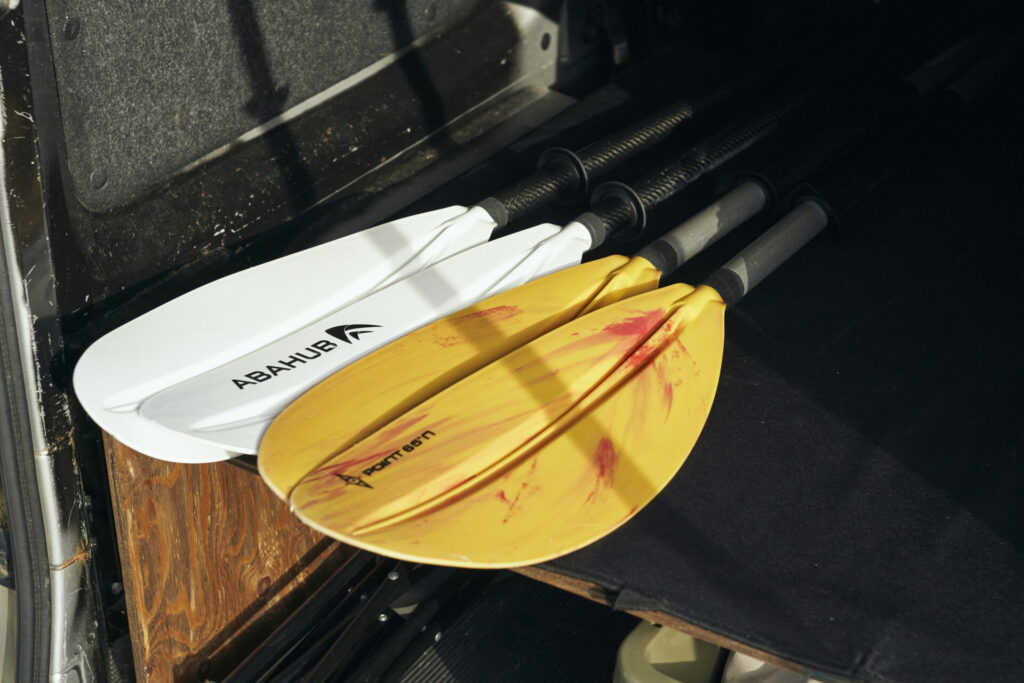
He chose Iriomote Island in Okinawa as his new field. Working for a local tour company, he earned his sea-kayak instructor’s license and spent two and a half years immersing himself in marine life and guiding.
Eventually, Nishimura returned to his hometown of Nanao in Noto after nearly twenty years abroad.
“When I came back to Japan, I paddled a kayak around the entire Noto Peninsula over the course of a week. Since I’d barely spent time outdoors as a child, seeing those landscapes for the first time moved me deeply. I thought, What a beautiful place this is. This experience made me want to share Noto’s natural beauty with local children, so they’d grow up proud of their home—and always want to return.”
Inspired, he began preparing to open a base where people could enjoy sea kayaking, sailing, and cycling. He renovated a large warehouse, stocked it with equipment, and even hosted preview sessions for overseas tour operators. Everything was ready for launch—until disaster struck.
The Noto Peninsula Earthquake devastated his home, store, and storage facilities, forcing him to abandon the project he had spent two years building.
“For a while, I couldn’t think about the future at all,” he recalls. “Every day was about clearing rubble and cooking meals for our neighbors. My wife was nine months pregnant, and my only thought was to protect my family.”
He decided to move temporarily to Osaka, his wife’s hometown, to rebuild their lives.Then, an unexpected opportunity arrived: the owner of a sea-kayak shop on Miyajima contacted him, asking whether he would take over the shop and its equipment. With his family’s safety in mind and a desire to start anew, Nishimura made the decision to relocate to Miyajima.
Delivering Hospitality Through Sea Kayaking
In May of that year, Nishimura moved to Miyajima with his family. After losing nearly everything in the Noto earthquake, the island became both a place of rebuilding and renewal—a new home and a new field of adventure.
He took over the existing sea-kayak shop from its previous owner, adding a new name: Miyajima Sea Kayak “Nossie.” The word “Nossie” is a term Nishimura coined, meaning “a person from Noto.” It carries the spirit of his hometown and his determination to start again.
“My first impression was how easy it was to live here,” he says. “I took over the former owner’s house, the neighbors welcomed us warmly, and we quickly became part of the community. I even made friends with other newcomers right away. But above all, what really amazed me was the natural environment.”
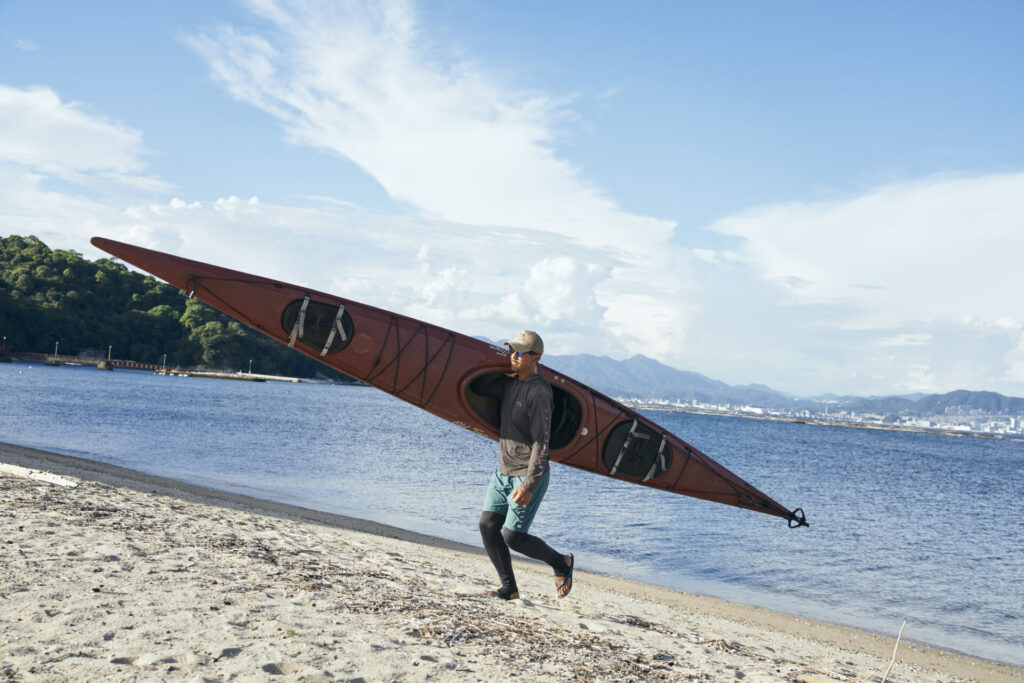
For nature lovers, Miyajima is a paradise. Within its compact landscape, the sea and the mountains coexist side by side. A five-minute walk from the center of town leads to a trailhead, while walking the opposite way brings you to the beach.
“Thanks to the calm waters of the Seto Inland Sea, we’re rarely troubled by strong winds or high waves,” Nishimura explains. “That means tours are almost never canceled. Few islands in Japan offer such perfect conditions for marine activities.”
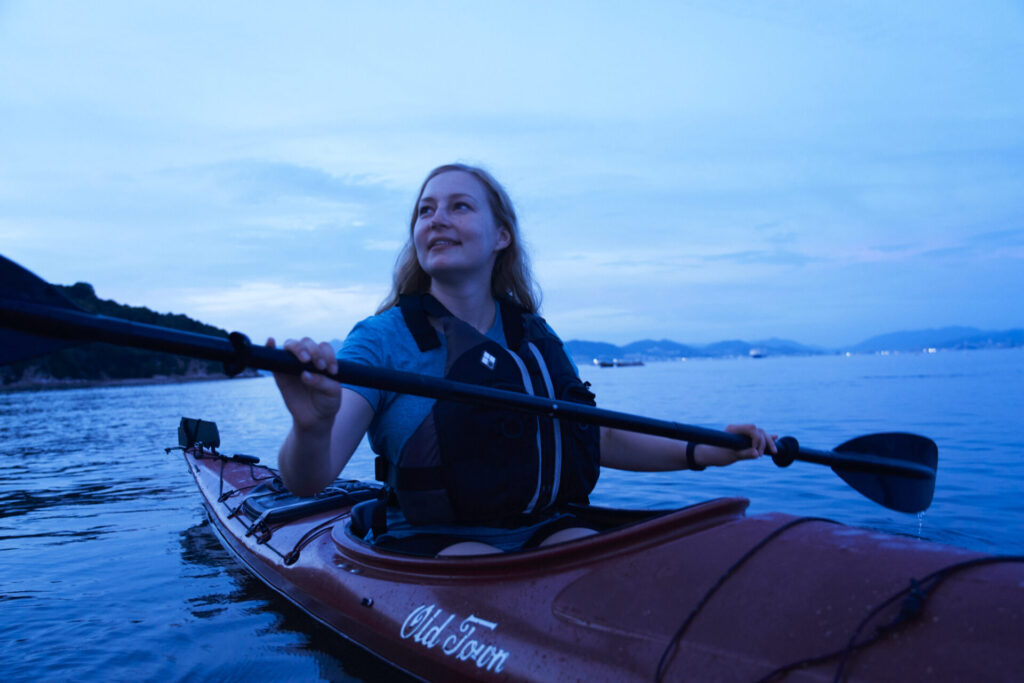
His programs range from beginner-friendly 90-minute courses to advanced full-day expeditions lasting over eight hours. The most popular request, however, is to view Itsukushima Shrine’s Great Torii from the sea—the angle for which the shrine was originally designed to be seen. During the tour, Nishimura also shares the site’s cultural and historical background.
Another favorite is the “Seven Shores Pilgrimage Course,” which follows an ancient ritual: before visiting the main shrine, worshippers would stop at seven small coastal shrines around Miyajima to purify their hearts and bodies.
For those seeking tranquility, the coastal heritage course guides participants along the island’s eastern and southern sides—areas untouched by human settlement. As guests paddle through the calm, mirror-like waters, the pristine forests and quiet coves evoke a sense of sacred peace.
“Some guests are so moved they cry,” Nishimura says softly. “They often tell me, ‘I never knew Miyajima was such a beautiful place.’”
Foreign visitors, in particular, join the tours to relax and recharge during their travels.
“Many spend two or three weeks touring Japan,” he explains. “They visit busy cities and then come to Miyajima to reset through kayaking before continuing their journey. Tours during calm mornings, quiet evenings, or under the moonlight are especially popular.”
In Latin, the root of the word hospitality—hospes—means to give travelers food, rest, and renewal before sending them on their way. Nishimura’s tours embody that philosophy perfectly.
“I want people to regain energy through the sea,” he says. “To feel refreshed, then set off again—stronger.”
Since moving to Miyajima, he has spent his days exploring the surrounding islands and hiking its mountains, discovering new wonders constantly.
“Compared with other islands, Miyajima has far more untouched nature,” he notes. “You can see the layers of the earth exposed in its cliffs, sense geological history, and encounter unique insects and plants found nowhere else. It’s an incredible environment—especially for children to experience firsthand.”
What Do You Wish to Pass On to the Future?
When asked what he hopes to carry into the future, Nishimura pauses for a moment before speaking slowly and thoughtfully.

“Because of my own childhood, I have a strong belief in the importance of living healthily. I want to keep moving, keep my body strong, and stay active in the mountains and the sea. If you’re healthy, you can enjoy life—and you can keep traveling. I think my role is to share that mindset and to build a community of people who live it together.”
He hopes to one day create opportunities for children to experience the wonder of nature through play and adventure.
“Once the groundwork is ready, I want to invite kids to explore—using all five senses to see, hear, smell, touch, and taste the world around them. Whether in Miyajima, Noto, or New Zealand, it doesn’t matter. What’s important is feeling nature directly through your body and heart. That’s the kind of place I want to build for the next generation.”
For Nishimura, who once spent much of his youth in hospital rooms, the sea and mountains are now his fields of freedom and adventure.
“When you paddle a kayak out to sea, it’s thrilling but also a little frightening,” he admits. “There’s a moment when the vastness of the ocean almost overwhelms you—but then, your sense of adventure lifts you forward. That feeling—the urge to see, to learn, to experience—is what keeps me moving.”
Now living with his family on Miyajima, Nishimura gazes out over the calm waters of the Seto Inland Sea.
“For now, I just want to enjoy this field to the fullest,” he says with a smile.As he pushes his kayak from shore and glides into the quiet sea, the same spirit of adventure that has guided him from the mountains of New Zealand to the waters of Miyajima continues to rise within him—steady, bright, and endlessly curious.
